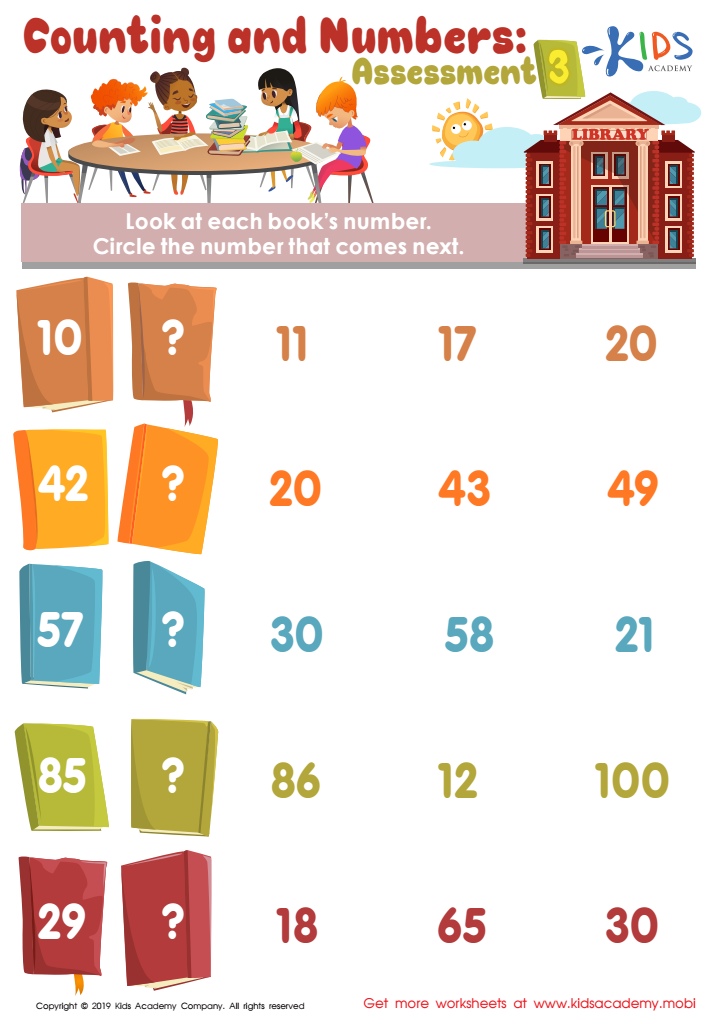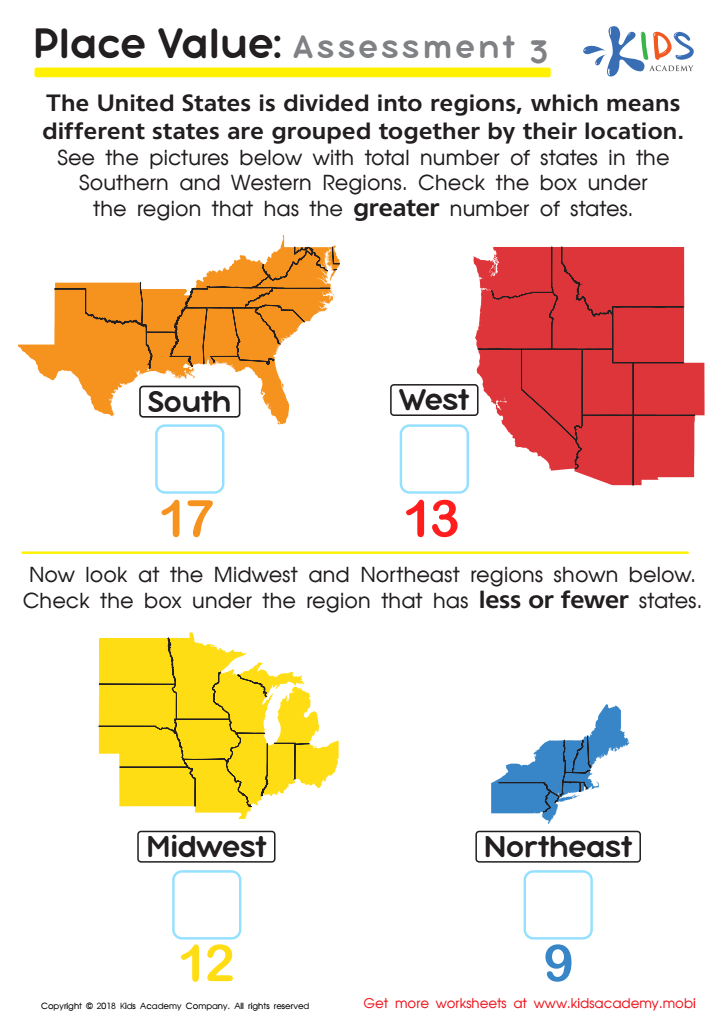Normal Numbers worksheets activities for 7-Year-Olds
2 filtered results
-
From - To


Counting and Numbers: Assessment Worksheet


Place Value: Assessment 3 Worksheet
Normal Numbers worksheets activities play a crucial role in the educational journey of students, particularly in enhancing their numerical skills and understanding of mathematics. These activities, carefully designed and structured, cater to a wide range of learning needs, making them an indispensable tool in both classroom and home learning environments.
Firstly, Normal Numbers worksheets activities provide a structured approach to learning numbers, which is essential for building a solid mathematical foundation. They introduce students to the basics of numbers, counting, addition, subtraction, and gradually progress to more complex concepts such as multiplication, division, and fractions. This step-by-step approach helps in reinforcing concepts and ensures that students grasp the fundamentals thoroughly.
Moreover, these worksheets are designed to cater to different learning styles. Whether a student is a visual learner, who benefits from seeing concepts laid out on paper, or a kinesthetic learner, who learns through doing, Normal Numbers worksheets activities offer something for everyone. This inclusivity promotes a more engaging and effective learning experience for all students.
Normal Numbers worksheets activities also offer the advantage of practice and repetition, which are key to mastering numerical skills. Through consistent practice, students can solidify their understanding of numbers, improve their accuracy and speed in calculations, and develop confidence in their mathematical abilities. This confidence is crucial for fostering a positive attitude towards math, which can influence students' success in the subject long-term.
Furthermore, these activities encourage independent learning. Students can work through the worksheets at their own pace, allowing them to spend more time on concepts they find challenging. This self-paced learning promotes autonomy and responsibility, valuable skills that extend beyond the math classroom.
In summary, Normal Numbers worksheets activities are a fundamental tool in the development of numerical skills. Their structured approach, inclusivity, provision for practice and repetition, and promotion of independent learning make them an effective and essential component of math education.
 Assign to My Students
Assign to My Students



%20(1).jpg)



.jpg)







